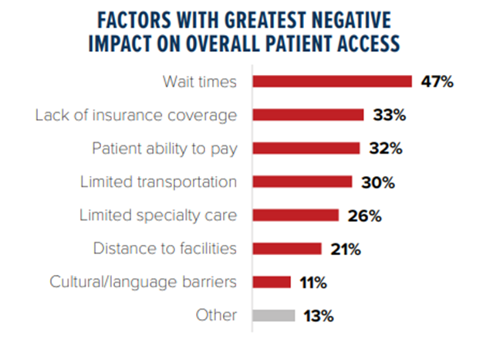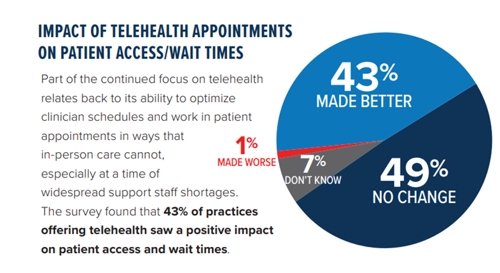MGMA Insights podcast covering staffing shortages, clinician retention, and enhancing patient care.
1. Workforce shortages
Across all specialties, healthcare professionals are reaching retirement age, leaving large gaps and staffing shortages across facilities. Filling these vacancies can pose a challenge, especially in rural areas. An increased reliance on existing staff to compensate for gaps in coverage leaves many clinicians facing high levels of burnout. More than simple exhaustion, 31% of surveyed clinicians attribute feelings of undervalue and underappreciation to this burnout. As a result, demands for better work-life balance and flexible schedules have skyrocketed. To address these challenges, locum tenens clinicians and part-time staff should be used. Locums clinicians aid in alleviating pressures off existing staff and providing greater flexibility to schedules. According to clinicians surveyed, 51% report a strong work-life balance as the greatest positive impact on recruitment and retention.
2. Technological advancements
New technologies like artificial intelligence (AI), telehealth and AI telehealth services are quickly becoming integrated throughout healthcare. While this digitization opens the door to a greater span of care — and improved patient experience, it is also creating new challenges for underserviced facilities already struggling to keep up. As technology offerings and solutions continue to grow, it’s crucial to secure buy-in from all key stakeholders before making significant investments. Without proper alignment, the adoption of new technologies can face resistance and underutilization, leading to wasted resources and high costs.

3. Economic pressure
Rising operational costs and pressures to maintain profitability pose serious concerns to healthcare organizations, especially in rural areas where patient volume may not be sufficient to cover operational costs. These concerns are only heightened by the decline in reimbursement rates from both insurers and government programs. Additionally, the need to offer competitive salaries to retain and attract talent is high in the current competitive job market. This is especially true in urban areas, where employment opportunities are often abundant.
4. Changing patient expectations
Today’s patients have increased expectations regarding care delivery. A high demand for convenience, access, shorter wait times and flexible scheduling requires facilities to adapt to meet patients' standards. Rural areas face challenges navigating limiting resources, while urban areas must operate managing high patient volumes. There is also a growing awareness and emphasis on addressing social determinants of health (SDoH). These include transportation, housing, financial stability and more, impacting patient access and outcomes, especially in under-resourced areas. Telehealth can effectively address patient volumes and limited resources, especially when concerning social determinants of health (SDoH). Telehealth allows for care from the comfort of patients’ homes and expands access to those who otherwise would not receive treatment; while there are several benefits, it is also important to keep the digital divide in mind when determining the use of technology, as lack of access to technology can be a barrier for care.

5. Regulatory and compliance requirements
Medical practices and health systems increasingly face regulatory demands around data security, patient privacy and quality reporting. While these requirements are beneficial to patient safety, they also add operational challenges and drive increased needs for advanced IT systems. Additionally, variations in reimbursement policies, especially for services provided by Advanced Practice Providers (APPs), can create limitations to fully utilize these professionals.
6. Geographic and demographic factors
Rural areas, being isolated, face unique challenges in staffing and attracting talent, implementing new technologies and maintaining financial viability in undesirable locations and limited access to specialized care. Urban areas face challenges concerning high population, overcrowded facilities and long hospital wait times, driving the need for operational efficiency and advanced technology.
While each region — urban, suburban, and rural — faces its own unique challenges, it is also fighting to overcome these six challenging factors. Of these six, the number one challenge remains finding the right people.
Download the full report, “Future Forward Strategies for Rural and Urban Care Delivery Challenges” to learn more about the nationwide findings and strategies to overcome industry challenges today and in the future.

About the author
Amelia Vietri
Senior Vice President of Clinic-Based Surgery
Amelia is a senior vice president and partner at LocumTenens.com, leading the women’s health, urology, otolaryngology and dermatology service lines. Amelia began her career with LocumTenens.com in 2008, focused on clinician recruitment efforts. She later moved into leadership roles, specializing in the growth and development of new service lines for the company. Amelia received her Bachelor of Business Administration degree in Marketing from the Terry College of Business at the University of Georgia. Since joining LocumTenens.com, Amelia has received numerous awards and recognitions, most notably, achieving partner in 2017.





